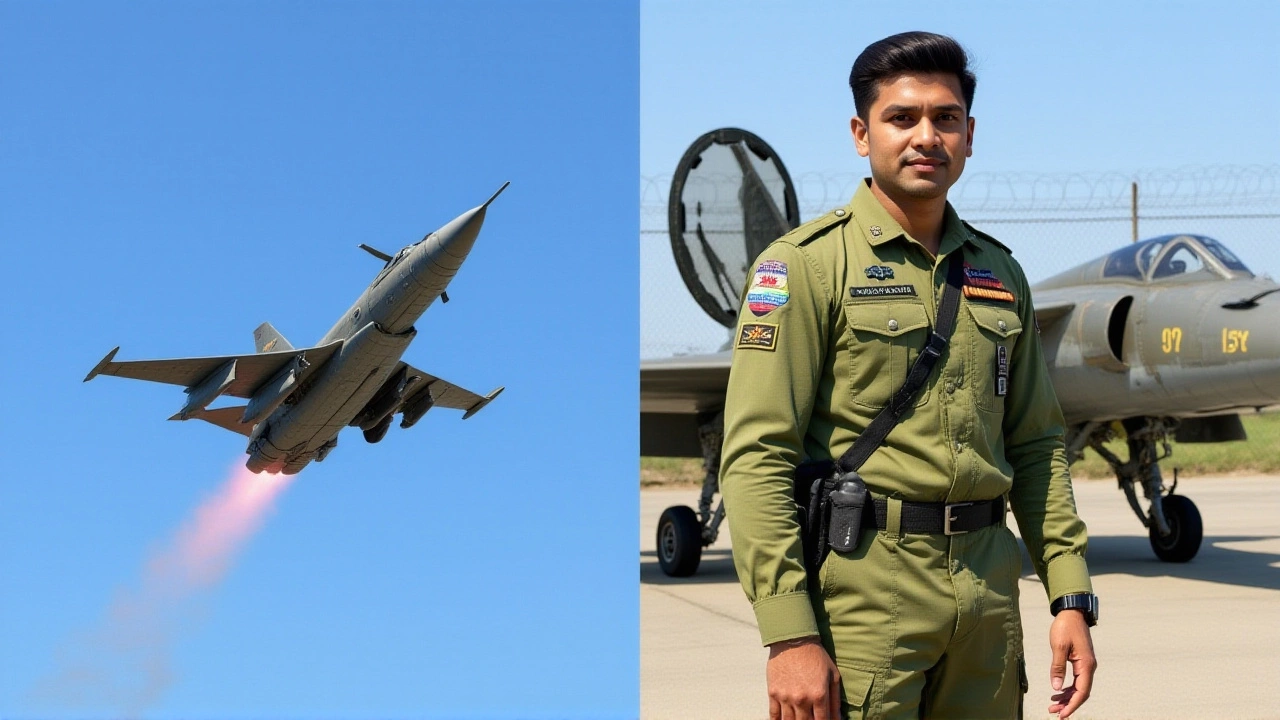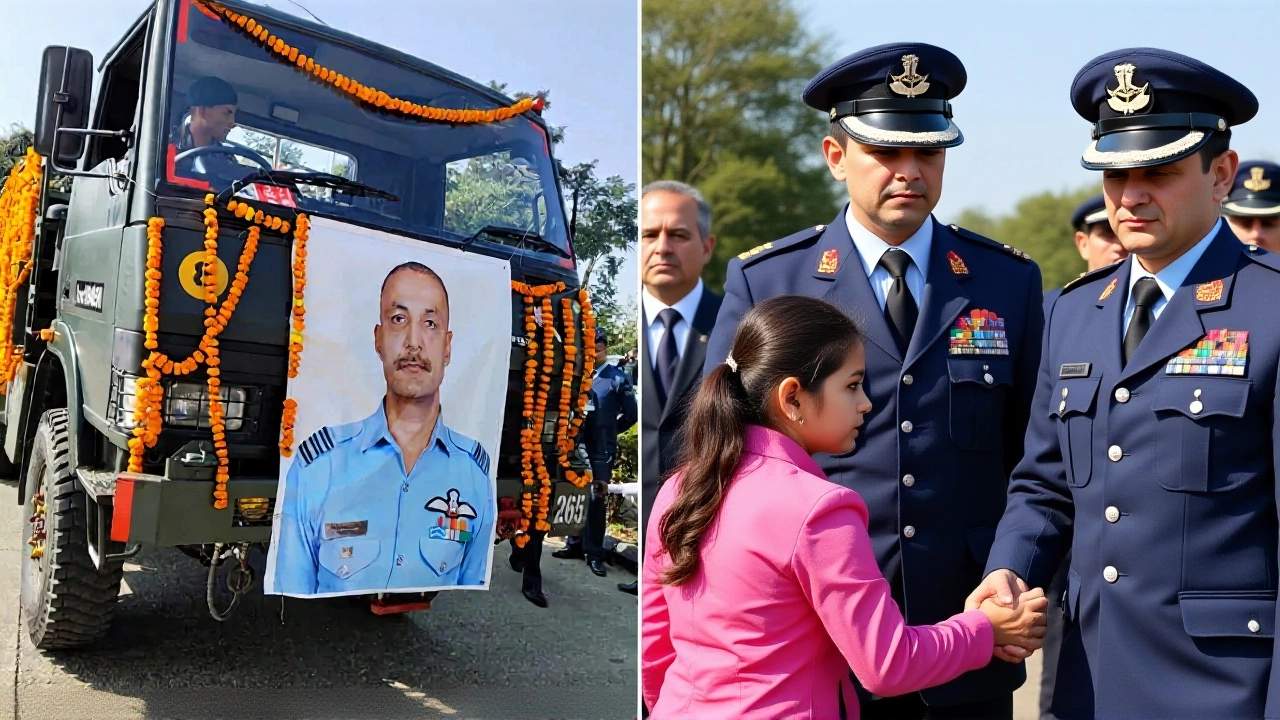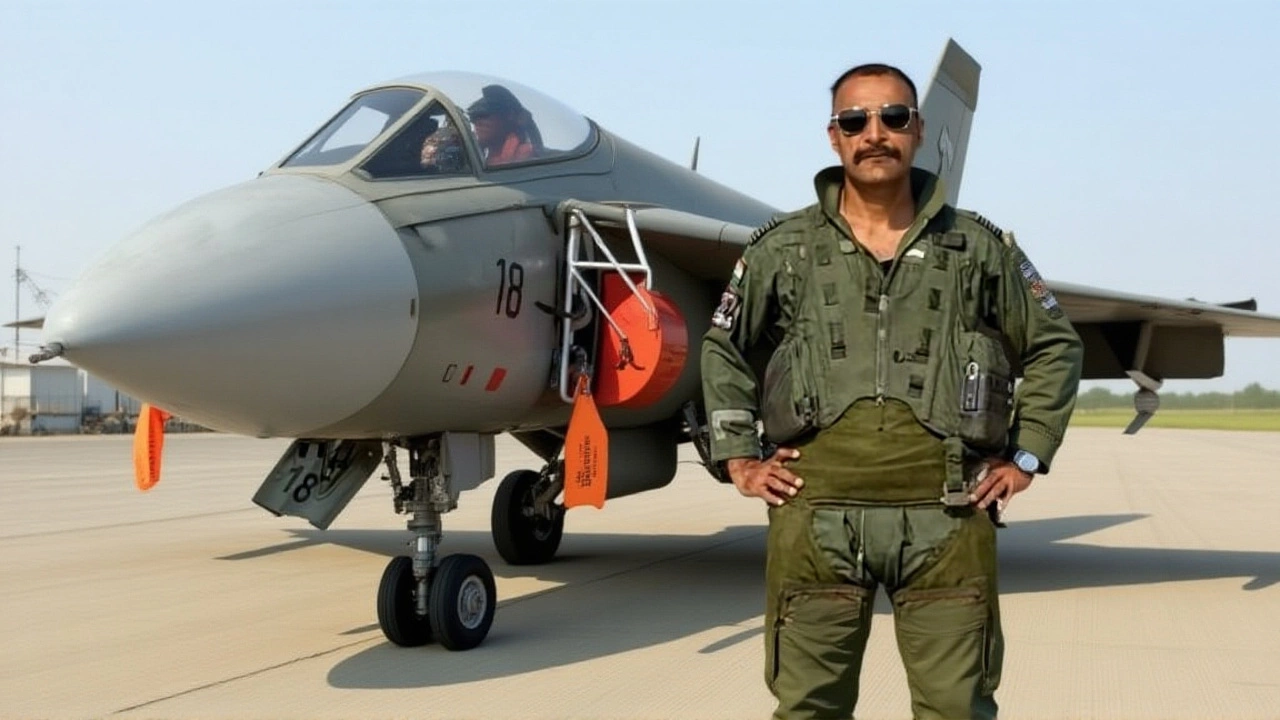When Wing Commander Namansh Sial took off in a Indian Air Force Tejas fighter jet at the Dubai Airshow 2025Al Maktoum International Airport, he was flying one of the most advanced aircraft India has ever built — and one of its most vulnerable. At 2:10 p.m. local time on Friday, November 21, 2025, the jet, assigned to the No. 45 Squadron 'Flying Daggers' based in Sulur, Tamil Nadu, went into an uncontrollable roll during a low-altitude maneuver. It wasn’t a stall. It wasn’t pilot error alone. It was physics, timing, and tragedy converging in eight minutes of flight. Sial, 38, a native of Kangra in Himachal Pradesh, ejected — but too late. The jet slammed into the ground. A fireball erupted. The crowd fell silent. And the world watched a hero’s final moments unfold on video.
A Pilot’s Final Moments
The recovered footage shows Sial fighting the jet with everything he had. He pulled hard, corrected aggressively, even executed a barrel roll to regain control. But the Tejas, still in its early operational phase, was performing a negative-G turn at barely 150 feet — a maneuver that pushes the limits of its flight control software and human endurance. At that altitude, ejection isn’t a choice; it’s a last resort. He pressed the ejection button. The seat fired. But the parachute didn’t have time to deploy fully. The impact was brutal. Witnesses described smoke rising like a funeral pyre, then the stillness that follows when something you’ve seen in training becomes horrifyingly real.
Who Was Namansh Sial?
He wasn’t just a pilot. He was a husband. A father. A soldier who married another officer — Afshana Sial, also in the Indian Air Force. Together, they’d sworn to defend the country, raised a seven-year-old daughter, and dreamed of retiring together to a quiet life in the hills of Himachal. They’d even talked about opening a small café near Dharamshala. That dream died with him. His parents, both elderly, flew to Dubai to identify his body. His daughter didn’t understand why her father wouldn’t come home.
A Nation Mourns — and a Global Air Force Community Reacts
The Russian Knights, the famed aerobatic team of the Russian Air Force, paused their own display. In a move reserved only for fallen comrades, they flew a missing man formation — four jets in tight formation, one breaking away sharply upward, vanishing into the sky. Their social media post read: “We lost a brother today. Not in war. Not in combat. But in the sky we all love. We salute you, Wing Commander Sial.”
The American team — the U.S. Air Force Thunderbirds — made a different, equally powerful statement. While show organizers continued the schedule, the Thunderbirds, along with several other international teams, canceled their final performance. One pilot, speaking anonymously, said: “We didn’t want to fly for entertainment after that. We flew for duty. But today, we flew for respect.”
The emotional response from global air forces wasn’t scripted. It was instinctive. Pilots, from Moscow to Miami, know the unspoken code: when one of us falls, we don’t just mourn — we remember.

What Happened to the Tejas?
The Tejas is India’s homegrown light combat aircraft — a symbol of national pride, developed over two decades by the Aeronautical Development Agency and Hindustan Aeronautics Limited. It’s flown in combat exercises, air shows, and even in border patrols. But it’s also faced criticism over engine reliability, software glitches, and low-altitude handling — especially during aggressive aerobatics.
According to preliminary reports, the jet was performing a “low-speed, high-angle-of-attack roll” — a maneuver rarely practiced in training. The flight control system may have struggled to compensate for the rapid change in aerodynamic forces. Sial, an experienced pilot with over 1,200 flight hours, was one of the few qualified to fly the Tejas in such displays. He’d trained for months for this moment.
Now, a Court of Inquiry has been ordered by the Indian Air Force. Its findings — expected in 60 to 90 days — will determine whether the crash was mechanical, procedural, or a combination of both. The world is watching. Because if this was a flaw in the jet, it’s not just one pilot’s life that’s at stake — it’s the future of India’s indigenous defense program.
The Long Road Home
Sial’s body was flown back to India on Saturday, November 22, 2025, aboard an Indian Air Force C-17 Globemaster. On Sunday, November 23, his coffin arrived at the Gagl Air Force Station in Kangra. Hundreds lined the route — civilians, veterans, schoolchildren holding handmade signs: “Thank you, Sir.” His funeral, held with full military honors, ended with the playing of “Last Post” and a 21-gun salute. His daughter placed a small toy airplane on his coffin. His wife stood silent, her uniform crisp, her eyes dry — but her grief louder than any cry.

What’s Next?
The Dubai Airshow 2025 continued — as do most air shows after tragedies. It’s the unspoken rule: the show must go on. But the tone changed. The music was softer. The crowd quieter. Pilots hugged longer before takeoff.
India has already begun reviewing its aerobatic training protocols for the Tejas. The Indian Air Force is expected to restrict low-altitude maneuvers until the inquiry concludes. Meanwhile, global defense analysts are asking: Is the Tejas ready for prime time? Or was this crash a warning we ignored?
Sial’s death isn’t just a loss. It’s a mirror. It reflects the risks we ask our pilots to take — the pressure to showcase national strength, the gap between ambition and engineering reality, and the human cost of progress.
Frequently Asked Questions
What caused the Tejas jet crash at Dubai Airshow 2025?
The official cause is still under investigation by a Court of Inquiry. Preliminary evidence suggests a loss of control during a low-altitude negative-G turn, possibly due to flight control software limitations under extreme aerodynamic stress. Wing Commander Sial ejected, but at just 150 feet, there wasn’t enough time for the parachute to deploy fully.
How did global air forces respond to the crash?
The Russian Knights performed a traditional ‘Missing Man’ formation in tribute, while the U.S. Air Force Thunderbirds canceled their final performance alongside other international teams. These gestures, rare in air shows, reflect the deep brotherhood among military pilots — a silent acknowledgment that the sky claims its own, regardless of nationality.
Was Wing Commander Sial experienced enough to fly the Tejas in such a display?
Yes. He had over 1,200 flight hours, including extensive experience in the Tejas. He was one of only a handful of pilots certified for aerobatic displays in the aircraft. His selection for the Dubai Airshow was an honor — not a risk taken lightly. His training and skill make the crash even more tragic and complex.
What impact could this crash have on India’s Tejas program?
The crash could delay export deals and trigger a review of low-altitude flight profiles for the Tejas. While the aircraft has passed combat trials, aerobatic displays push it beyond its design envelope. If the inquiry finds a systemic flaw, it could lead to software updates or even temporary flight restrictions — a setback, but not a death knell for the program.
What happened to Wing Commander Sial’s family after the crash?
His wife, Afshana Sial, also an IAF officer, is receiving full support from the Indian Air Force. His seven-year-old daughter and elderly parents were brought to Kangra for the funeral. The IAF has promised lifelong financial support, education for his daughter, and housing. But no policy can replace the man who was a husband, father, and friend.
Why did the Dubai Airshow continue after the crash?
Air shows typically continue out of respect for the performers and organizers’ commitments — not out of indifference. The decision was controversial, but many pilots believe honoring the fallen means continuing the mission. Still, the emotional tone shifted dramatically. The show went on, but the sky felt heavier.

